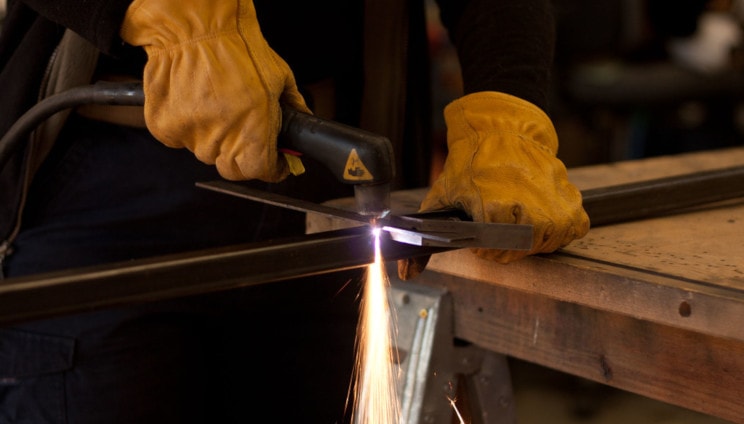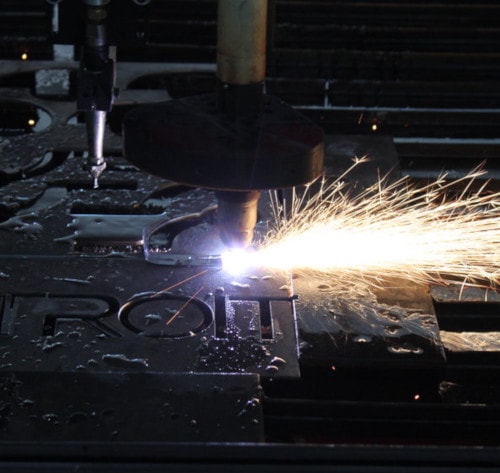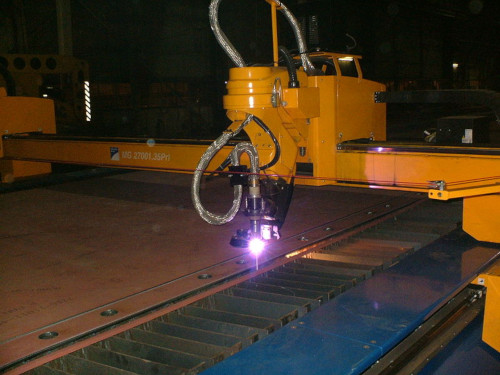How Hot Does a Plasma Cutter Actually Get?
Last Updated on

Are you wondering how hot a plasma cutter gets? As it’s the most effective means of cutting metal with heat, it needs to be an incredibly hot system. A plasma cutter can chew through up to 200 inches of material per minute. Scientists and engineers have been working on improving the technology to increase the heat. So far, from less than 35 inches per minute to 200 inches per minute, they have gained tremendous traction. This is just the start of what we believe can be achieved with plasma. Some people are even creating it in their microwaves with grapes. Watch here.
What is Plasma?
Did you know that plasma is the fourth state of matter after gas? Matter goes from a solid to a liquid, a gas, and then to plasma. The main difference between each stage is the temperature it reaches.
The molecules in the first three states increase in their distance depending on the temperature, from tight together as a solid to floating apart as a gas. Plasma goes a step further in separation through the electrons breaking away from the molecules. In doing so, it brings the molecules together as one, unlike gas, by the electrical force created in the process.
As the electrons separate, this intense electrical energy that develops holds them all together, forming the plasma, this scorching state of matter. It is this fierce heat that’s harnessed to cut through metal with the plasma cutter.
How Hot Does a Plasma Cutter Get?
The increments between each state of matter increase significantly. With water, for example, it takes just 2° F to turn a solid into a liquid, and a further 212° F to turn that liquid into a gas. The number increments from 2 to 210 increase further by over 10,000 into the plasma form. The plasma cutter jet reaches 40,000° F, or 22,000° C.
This is an insanely hot material to hold at your fingertips. While some plasma cutters are big machines run by automated systems surrounded by guards and heavy-duty safety features, the most common plasma cutters are handheld devices without a guard that depend upon the operators’ hand control. They can be purchased by anyone for less than $300 here.
That’s a scary thought when you think who might be waving around one of these high-tech machines, but I love using them. Plasma cutters make cutting through almost any solid slab of metal a breeze.

What Does the Future Hold for Plasma Cutting?
Although high-end plasma cutters can chew through metal plates at a rate of 200 inches per minute with 40,000° F of heat, some scientists have recorded plasma reaching close to 10 trillion degrees F. It’s unlikely anyone would want to use that heat to cut a metal plate, but this shows the possibilities ahead for new plasma technology. The opportunity for harnessing this incredible state of matter is phenomenal.
The present downfall of the plasma cutter is that it leaves dross, a residue from the melted metal, on the corners of the material that’s been cut. Laser and water cutting machines, on the other hand, leave a clean-cut surface, meaning almost no finishing work is required after they’re used. Many welders would probably like a laser or water cutter in their workshops to produce such clean cuts. However, these cutters are significantly more expensive, do not come in portable ranges, and cut from three to 100 times slower than the plasma cutter. Many manufacturers use them, but these qualities make them undesirable for the typical workshop.
However, with the appearance of the laser and water cutter’s clean finish in the engineering world, the future for plasma cutters will surely be on the rise in technology in this area. If they can produce smoother cuts at the same or an even faster rate, their effectiveness will be unrivaled by the other machines that are appearing.

Conclusion
As fun and useful as the plasma cutter is for cutting metal, the heat it produces proves a terrifying risk for anyone who’s not careful. The way a plasma cutter works means it most likely won’t melt your finger off if you torched the plasma over it. However, it would do severe damage if your finger was underneath the metal you were cutting, due to the extreme heat that passes below the metal being cut.
Next time you do some work with a plasma cutter, think about the 40,000° F that you’re holding at your disposal. It has some serious heat. Feel free to leave your comments and questions below.
Sources used:
https://www.thefabricator.com/article/plasmacutting/the-life-and-times-of-plasma-cutting
https://www.engineeringtoolbox.com/melting-temperature-metals-d_860.html
https://www.esabna.com/us/en/education/blog/what-is-the-best-value-plasma-laser-or-waterjet.cfm
https://www.livescience.com/46506-states-of-matter.html
https://education.jlab.org/qa/plasma_01.html
https://www.seeker.com/lhc-smashes-highest-man-made-temperature-record-1765929082.html
https://www.youtube.com/watch?v=GHLD8SPIDAU
Header image credit: jbolles, Flickr
